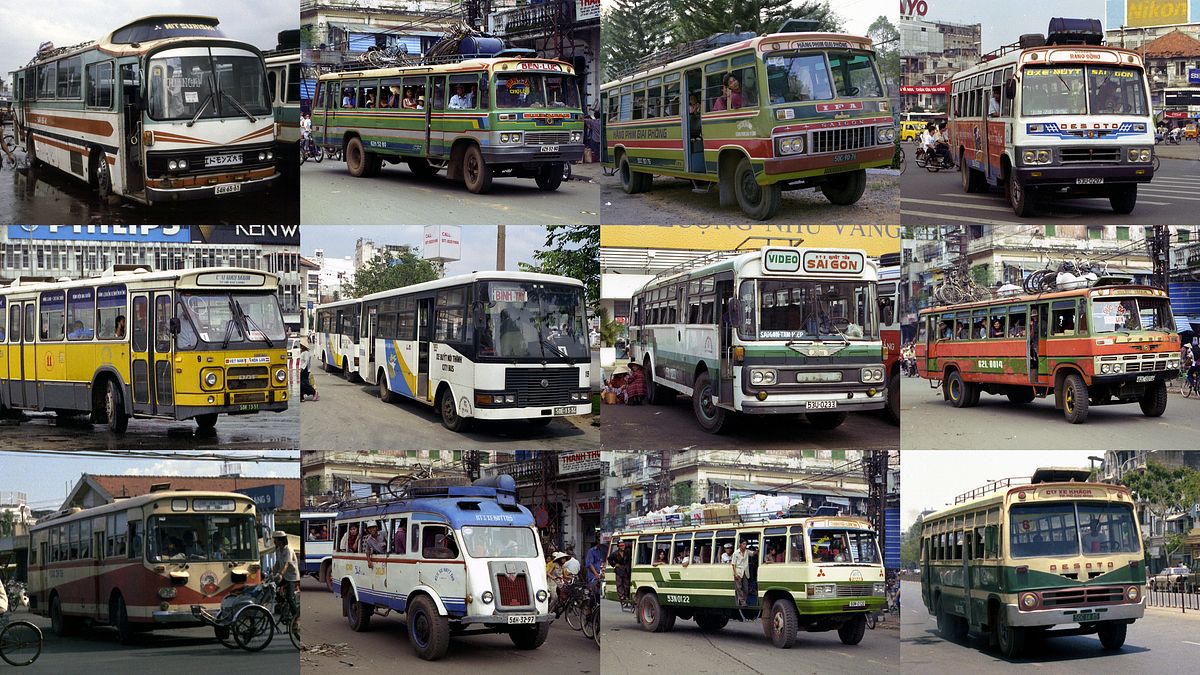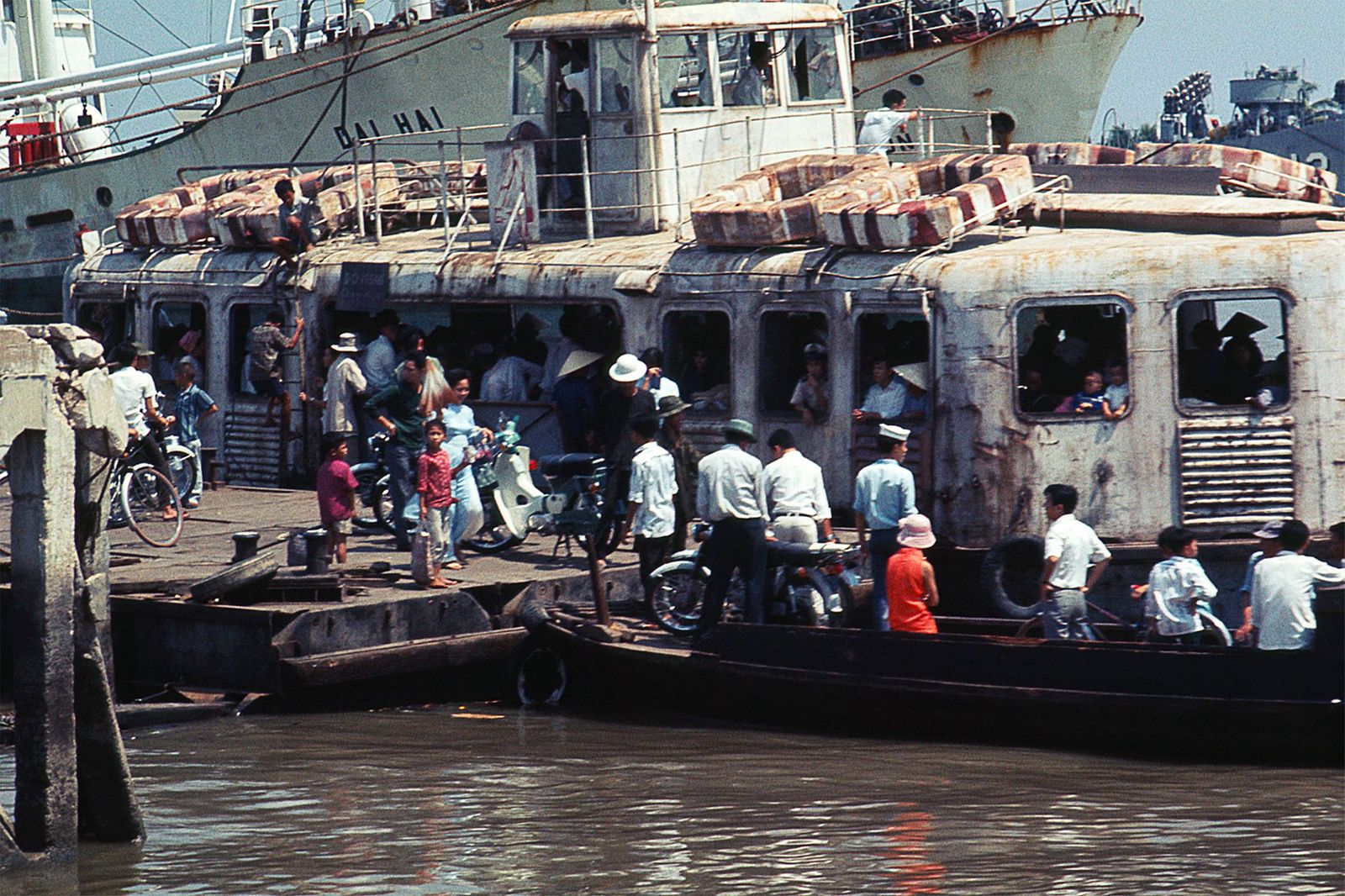Saigoneers who spent their formative years in the 1990s will remember an era of secondhand products of mixed origins. This unique feature of daily life also extended into the transportation realm.
In the immediate years following the đổi mới reform, as Vietnam’s manufacturing capabilities were still lackluster, most local households turned to gently used appliances from Japan, which offered the ideal balance between affordability and endurance. Secondhand clothing was provided by the Swedish International Development Agency (SIDA) in bulk. In the universe of public buses, however, the models in use were a mixed bag from various nationalities.
This album of Saigon buses, compiled by Flickr user Ian Lynas, gives us some glimpses into the colorful and diverse world of public transport back in the 1990s. These include Isuzu from Japan, DeSoto from the US, DAF MB200 from the Netherlands, Renault Goélette from France, and more.

A DeSoto model in Saigon.

A DeSoto bus belonging to Rạng Đông Co-op in Chợ Lớn.
The term “public transport” is used loosely here, as the bus service known as “xe đò” by its users wasn’t fully operated by the government, but small co-ops (hợp tác xã). Each co-op was free to create bus routes, hire drivers, and manage its finances; routes included both intracity transport and interprovince coaches.
To maximize profits, owners often procured used vehicles from overseas, buying whatever other countries were willing to offload no matter how old or patched-up they were, resulting in a truly chaotic bus experience for riders. Depending on the route and co-op, one could be sitting on plush leather seats or rickety deathtraps on four wheels. In Japan's case, for example, buses operated under a strict turnover system where vehicles must be retired after 10–15 years of use, even if they were still in good conditions, so many of these ended up in Southeast Asia.
In 2001, the city decided to step in to straighten out the bus scene by limiting the age of vehicles in use to just 20 years and offering bus owners subsidies to buy new vehicles. Nearly 90% of buses operating at the time became “expired.”
Reacquaint with some of Saigon’s most iconic vintage buses from the 1990s below:

An inter-city DeSoto bus linking Chợ Lớn and Bến Lức (Long An).

Another DeSoto bearing a “Ford” name running between Chợ Lớn and Đức Hòa (Long An).

A Karosa bus (Czechoslovakia).

An ISUZU BU40 bus (Japan).

ISUZU bus leaving the 23/9 Park Depot in District 1.

ISUZU BU10 serving a domestic tourism company.

Nissan FHI serving as a company bus for workers.

A rare IFA W50L (East Germany) owned by the Giải Phóng Film Studio.

An IFA linking Hậu Nghĩa Township and Chợ Lớn.

A Mekong Star serving as a city bus in 1996. Mekong Star was produced by Mekong Auto, Vietnam's first bus manufacturer, and a joint venture between Vietnam, South Korea and Japan.

A DAF MB200 (Netherlands) running between Bến Thành and the Eastern Bus Station.

Another DAF in action.

A Mitsubishi Fuso (Japan) that still had its original Japanese that says “Via Kusumi, Umezu Depot.”

A Hino RE-100 (Japan) operated by the Quyết Tiến Co-op.

Another Hino vehicle.

A Renault Goélette (France) in Chợ Lớn.

A Fuso-Kureha bus (Japan). The label says エドモンズ大学 (Edmonds College). This vehicle was likely from the Kobe campus of the Edmonds College (Washington) that opened in 1990.

An ISUZU Kawasaki (Japan).

A Fuso-Kureha bus parked in the Independence Palace.

A Tân Hóa–Chợ Lớn bus.
Photos by Ian Lynas via RedsVN.














